Geoscience Reference
In-Depth Information
influenced by river run-off. The Odra Lagoon is in an intermediate position. Both the
Grande-Entrée and the Ria Formosa lagoons are totally under marine influence, regard-
less of the fact that they are significantly “restricted,” as could be assumed from their
shape. The Mar Menor Lagoon is restricted as well but it is also a hypersaline lagoon
because of significant solar evaporation.
Salt ratios can be used as an average characteristic of long-term variations (years
and decades). However, a more precise parameter is needed to evaluate the influence
of the fresh- and saltwater budgets on the lagoon behavior. Such a parameter should
provide answers to the following important questions: To what extent are lagoon
waters under the influence of the sea? Or, conversely, do lagoon waters have an
impact on adjacent seawater? For example, the lagoon salinity dynamics can also
be described by a salting factor defined as
FQ
=
(
Q
+
Q
)
(6.18)
s
inf
low
inf
low
fr
where
QQ Q Q Q
fr
=++−
riv
prc
grd
evp
and where the values and
Q
evp
are not negative.
It should be noted that although the absolute value of the sea inflow is important,
it is the ratio of the sea inflow to the river freshwater inflow that actually determines
the hydrological behavior of a lagoon. Strictly speaking, the salting factor reflects,
at a certain point in time, the actual tendency of the hydrological changes in the
lagoon. More precisely, it sets a limit to the salt ratio ( ) to which the lagoon
salinity is converging at this point in time. The lagoon tends to be less salty than
the adjacent open marine or ocean water if current
F
s
< 0.5, and saltier if current
F
s
> 0.5. The salting factor averaged over 1 year shows the general relationship
between water budget components and the lagoon hydrology. An example is shown
in Figure 6.10. The mean annual salting factor
F
s
< 0.5 indicates that the freshwater
influx is greater than the seawater flux and that the lagoon is under greater terrestrial
influence. A mean annual salting factor between 0.5 <
F
s
< 1 indicates that the lagoon
is predominantly influenced by the sea.
The Curonian and Odra lagoons are examples of freshwater lagoons influ-
enced predominantly by their catchments area (
F
s
< 0.5). The Vistula Lagoon,
with relatively low salinity waters, is predominantly influenced by the Baltic Sea.
QQQQ
inflow
,
,
,
,
riv
prc
grd
SS
sea
lag
Lagoon tends to be freshwater
Q
fr
= 0
Lagoon tends to be hypersaline
Predominant fresh
water influence
Predominant salt
water influence
0
0.5
1
Q
fr
<0
F
s
Vistula
Lagoon
Mar Menor Lagoon
Ria Formosa Lagoon
Kara Bogaz Gol
Lagoon
Curonian
Lagoon
Odra
Lagoon
Grande-Entrée Lagoon
FIGURE 6.10
Main gradations of salting factor and its annual average values for some selected
lagoons.































Search WWH ::

Custom Search